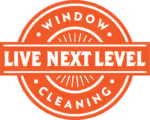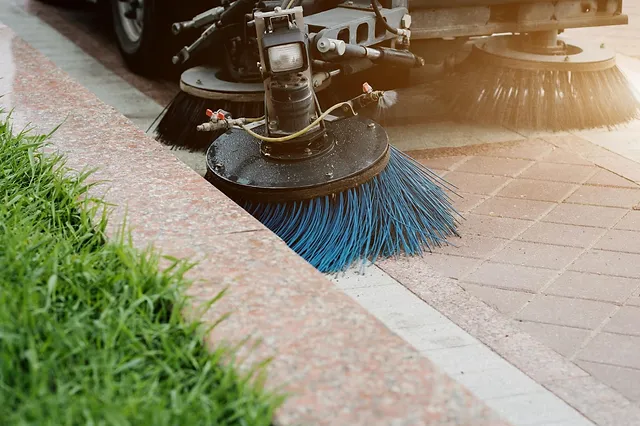Pressure washing a driveway can be a daunting task, particularly if you are new to the process. It is important to properly prepare and understand the equipment before beginning the job in order to ensure optimal results. This guide offers an overview of how to pressure wash your driveway from start to finish.
The first step of pressure washing is preparing the surface for cleaning. It is essential to clear away any debris that may obstruct access or interfere with the cleaning process. Additionally, it is necessary to determine which type of detergent will be most effective for removing dirt and grime from this specific surface.
After ensuring that all necessary preparations have been made, it is time to gather the appropriate tools for pressure washing. These include a pressure washer, safety glasses, gloves, a ladder, and other accessories as required for operation.
It is also important to become familiar with operating instructions for your particular pressure washer model before proceeding with cleaning your driveway. Different models will require different techniques and settings in order to achieve ideal results; therefore understanding these instructions thoroughly will enable you to operate confidently and safely while achieving maximum effectiveness with each stroke of the wand.
Prepare Your Driveway
In order to properly pressure wash a driveway, preparation is key; this includes ensuring the area is clear of debris and that the surface is cleared of any dirt or grime. Before beginning, it is essential to gather all necessary cleaning supplies such as detergents, brushes, gloves, and goggles for safety precautions. Cleaners should be applied prior to using a pressure washer in order to loosen any caked-on dirt before rinsing with high pressure water streams. It is important to note that certain materials like concrete may require special cleaners before applying a pressure washer.
Once the cleaning supplies are gathered and the surface has been prepped, it is time for the actual pressure washing. A good starting point would be choosing an appropriate nozzle size for the job; most nozzles come with settings ranging from 0° (most concentrated) up to 40° (most diffused). While more concentrated nozzles may provide better results when removing stubborn stains, they can also cause damage if used incorrectly. Therefore, it is important to exercise caution when deciding which nozzle size will work best for your particular driveway material and what level of power you wish to achieve with your cleaning process.
When operating a pressure washer on a driveway surface, it’s best practice to work at an angle rather than straight into it so as not to erode away any of its protective sealants or polyurethane coatings. Additionally take care not use too much detergent or cleaner solution as these could leave behind residues that later attract dirt and grime once dried off by sunlight exposure or rainfall. Once finished working on one section of the driveway move onto another with overlapping strokes in order ensure full coverage has been achieved throughout the entire surface area without missing any spots.
Gather the Necessary Tools
Gathering the necessary items is an important step for a successful pressure washing of a driveway.
Pressure washers come in various sizes, but for a driveway, a 2200-3000 PSI machine should suffice.
A fan attachment and detergent will help with removing dirt and grime from the driveway surface.
Safety precautions are also important when using powerful pressure washers, such as wearing safety glasses, gloves and long pants.
The following items should be gathered to properly prepare for pressure washing your driveway:
* A power source (electric or gas)
* Pressure Washer
* Detergents
* Fan Attachment (for applying detergent)
* Brushes/Scrubbers (for hard to reach areas)
* Extension Cords/Hoses (if applicable)
Additionally, sealing any cracks that may be present on the surface of the driveway is also recommended prior to power washing. Sealing cracks helps prevent water seepage into the underlying layers which can cause further damage. Depending on the size of the crack(s), sealant kits can be purchased at local home improvement stores or online retailers.
Pressure washing your driveway requires preparation and skill in order to get optimum results. Acquiring all of the necessary tools beforehand will ensure that you have everything you need before starting this project, which can save time and money down the line.
Understand Your Pressure Washer
Learning how to use a pressure washer correctly is key to achieving successful results when pressure washing your driveway.
It is important to understand the power output and water usage of your specific pressure washer in order to get the most out of it.
The power output of a pressure washer, measured in pounds per square inch (PSI), determines how much water will be expelled from the nozzle under high-pressure. Depending on the type of surface you are cleaning, different PSI levels may be necessary for optimal results.
Water usage is another factor that needs to be taken into consideration when using a pressure washer. This measurement, represented in gallons per minute (GPM), indicates how much water is being released from the nozzle at any given moment, and should be adjusted accordingly depending on what kind of job you are doing. A higher GPM means more water will flow through the hose and nozzle, but could also mean that more time will need to be spent cleaning due to increased suction power.
In addition, it pays off to familiarize yourself with additional features offered by modern-day pressure washers such as adjustable nozzles, onboard detergents tanks and tips designed for different surfaces or tasks – all of which can help make your cleaning task easier and quicker while delivering better results overall.
With these tools at hand and an understanding of their function, you can confidently begin tackling those tough jobs around your home or business with ease!
Pressure Wash Your Driveway
Cleaning your driveway with a pressure washer can be an effective and efficient way to remove dirt, grime, and other debris. Pressure washing is the process of using pressurized water to remove dirt or contaminants from hard surfaces such as driveways. To get started, here are seven steps for pressure washing your driveway:
- Set up the area by wedging debris away from the surface you will be cleaning.
- Choose the right nozzle for your pressure washer that has adjustable settings so you can decrease or increase the pressure accordingly.
- Check all hoses, connections, and nozzles for any potential leaks before beginning.
- Start at one end of the driveway and work in overlapping strokes until finished.
- Make sure to protect surrounding surfaces with plastic sheeting to avoid any accidental damage while using the pressure washer at full force on your driveway surface.
- Rinse off remaining debris with plain water when done to ensure all detergents have been removed from the surface completely once finished power washing your driveway..
- Finally, use a towel or rag to dry off remaining moisture from surface when finished power washing your driveway..
Pressure washing is an ideal way to clean driveways because it uses less water than traditional methods like hosing down or scrubbing with soap and water while still being able to reach narrow spaces where dirt may collect over time if left uncleaned for too long periods of time.
It also saves time since it removes most stains quickly without much effort required on behalf of whoever is operating the equipment.
Plus, its results are more visible than manually cleaning with soap and water because high-pressure nozzles help break apart tougher buildup that regular cleaning solutions cannot reach easily.
Pressure washing can also help prolong longevity of driveways by removing mold growth which can lead to weakening or discoloration of certain surfaces over a period of time if not treated properly.
Rinse and Repeat
It is important to rinse the driveway off after pressure washing to ensure that all detergents have been removed from the surface completely. How can one know if they have rinsed their driveway sufficiently? The answer is by looking for any residue of detergent left on the surface.
If there are bubbles or foam left behind, then it may be necessary to do a second rinse. Using biodegradable detergents with low sudsing properties will help minimize the amount of water needed for rinsing and conserve water in the long run. Pressure washers should also be set on a lower setting when rinsing as higher settings can actually cause more sudsing instead of eliminating them.
To avoid over-rinsing, homeowners should pay attention to how much time has passed since applying the detergent. Once the recommended wait time has elapsed, it’s time to start rinsing off your driveway. It may take several passes with different pressure settings and nozzle angles before all of the soap is completely gone, but it is worth taking the extra steps in order to get a thorough clean without using too much water in doing so.
Additionally, using a watering wand attachment helps direct water more precisely rather than just relying on a straight pattern from an unguided nozzle which can cause spots of residue being missed during cleaning process due to uneven coverage areas.
Finally, once you feel confident that you’ve achieved optimal cleaning results either through visual inspection or simply feeling that slippery texture associated with soap residue being washed away then its safe to move onto drying off your driveway properly before moving onto sealing and other maintenance processes if necessary. This ensures that no dirt will stick around after it’s dried and ultimately improves longevity of your asphalt or concrete surface when done regularly as part of preventative care routine.
Conclusion
The task of pressure washing one’s driveway can be daunting, but with the right preparation and tools, completing this project can be a rewarding experience.
The process begins by clearing the area and making any necessary repairs to the surface.
Next, a pressure washer must be acquired and familiarized in order to ensure safety while operating it.
Following these steps will help to maximize the effect of the cleaning operation.
After thorough coverage is achieved, consistent rinsing should take place in order to achieve desired results.
The satisfaction that comes from seeing a freshly cleaned driveway is unparalleled; feeling the smoothness beneath one’s feet as they traverse across it is an experience that invokes a sense of accomplishment and pride like no other.
With patience, dedication and knowledge, anyone can take part in this rejuvenating process to bring their home’s exterior back to life.




